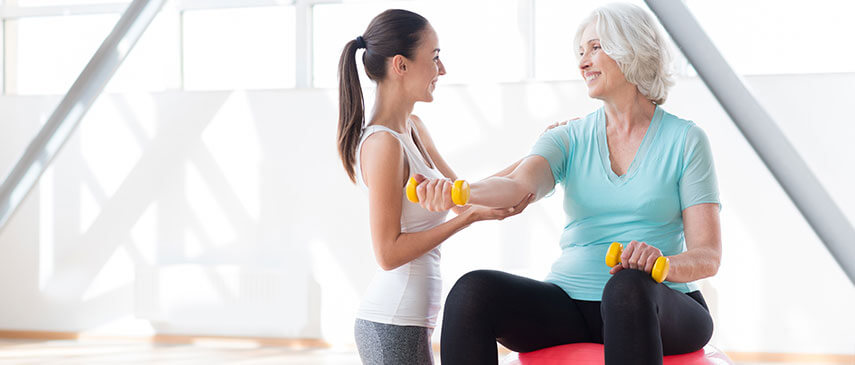A diagnosis of osteoarthritis in your hips, knees or other joints may seem like the perfect “excuse” to dodge workouts. Yet it’s more important than ever to keep your heart healthy and immune system strong, while also learning moves that improve your flexibility and strength.
In fact, building up your muscles through physical therapy and other exercise is one of the key ways you can relieve pressure on your joints — and potentially slow the progression of OA.
What to Avoid
It’s helpful to rule out what you shouldn’t be doing before you and your physical therapist come up with a workout plan that accommodates your OA. Anything routinely describes as “high impact” should be avoided to reduce stress on your joints.
Workouts to rule out include jumping rope, jogging, intense dance classes, tennis and basketball. In addition, think about which low-impact pursuits might lead falls or sprains. if you go hiking or even sailing, for example, jumping on and off docks or small ledges can add additional strain. Talk to your physical therapist to devise some workarounds. These adjustment allow you to have fun without needlessly straining your joints, or risking falls.
Building Muscles and Improving Joints
Along with any hands-on work your physical therapist may perform for your osteoarthritis, she can teach you moves that yield both strength and flexibility.
Stretching is an often-overlooked element of any exercise plan, but it’s especially crucial for people with OA. Your physical therapist will teach teach you specific moves during your sessions, which you can also work on at home. These moves are designed to take affected joints through their full range-of-motion. Targeted stretching builds overall flexibility, especially in the affected joints.
In addition, you’ll learn specific resistance moves that don’t strain the joints, but do strengthen the muscles surrounding those joints. Muscle-building is a crucial element of physical therapy for patients with osteoarthritis.
Boosting Overall Health
Exercises that get your heart pumping are often the best complement to the strength and flexibility moves you do in physical therapy. Any aerobic activities that are commonly described as low impact will likely suit your needs. But do discuss specific workouts with your physical therapist in order to determine if your type of osteoarthritis makes any of these activities particularly helpful for the location of your OA.
Low-impact, cardiovascular workouts that are best for people with osteoarthritis include swimming, biking, walking. Of these, swimming is the most friendly for people suffering from pain flare-ups, and a heated pool in particular may actually soothe aching joints.

